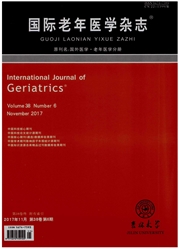

 中文摘要:
中文摘要:
活性氧是生物体内正常新陈代谢或由于环境因素而产生的具有很高生物活性的含氧化合物.ROS具有双重作用,细胞内部高浓度的ROS会引起氧化应激,损伤脂类、蛋白质、DNA等分子的结构,对细胞造成毒害作用;但在合适的生理浓度下,ROS则可通过信号转导途径触发细胞的防御保护机制.本文综述了细胞内ROS的种类以及抗氧化机制,并着重介绍线粒体自由基理论与衰老之间的关系.
 英文摘要:
英文摘要:
Reactive oxygen species (ROS) are produced by living organisms as a result of normal cellular metabolism and envi- ronmental factors. ROS have two roles including deleterious and beneficial species. Overproduction of ROS results in oxidative stress and damage to cell structures including lipids and membranes, proteins and DNA. Beneficial effects of ROS at low/moderate concen- trations can play the active roles in cellular protective responses by cellular signalling pathways. In this review cellular antioxidant sys- tems and the reletionship between mitochondrial free radical theory and aging are discussed.
 同期刊论文项目
同期刊论文项目
 同项目期刊论文
同项目期刊论文
 MicroRNA transcriptome analysis identifies miR-365 as a novel negative regulator of cell proliferati
MicroRNA transcriptome analysis identifies miR-365 as a novel negative regulator of cell proliferati PMT1 deficiency enhances basal UPR activity and extends replicative lifespan of Saccharomyces cerevi
PMT1 deficiency enhances basal UPR activity and extends replicative lifespan of Saccharomyces cerevi CIA2 deficiency results in impaired oxidative stress response and enhanced intracellular basal UPR a
CIA2 deficiency results in impaired oxidative stress response and enhanced intracellular basal UPR a 期刊信息
期刊信息
